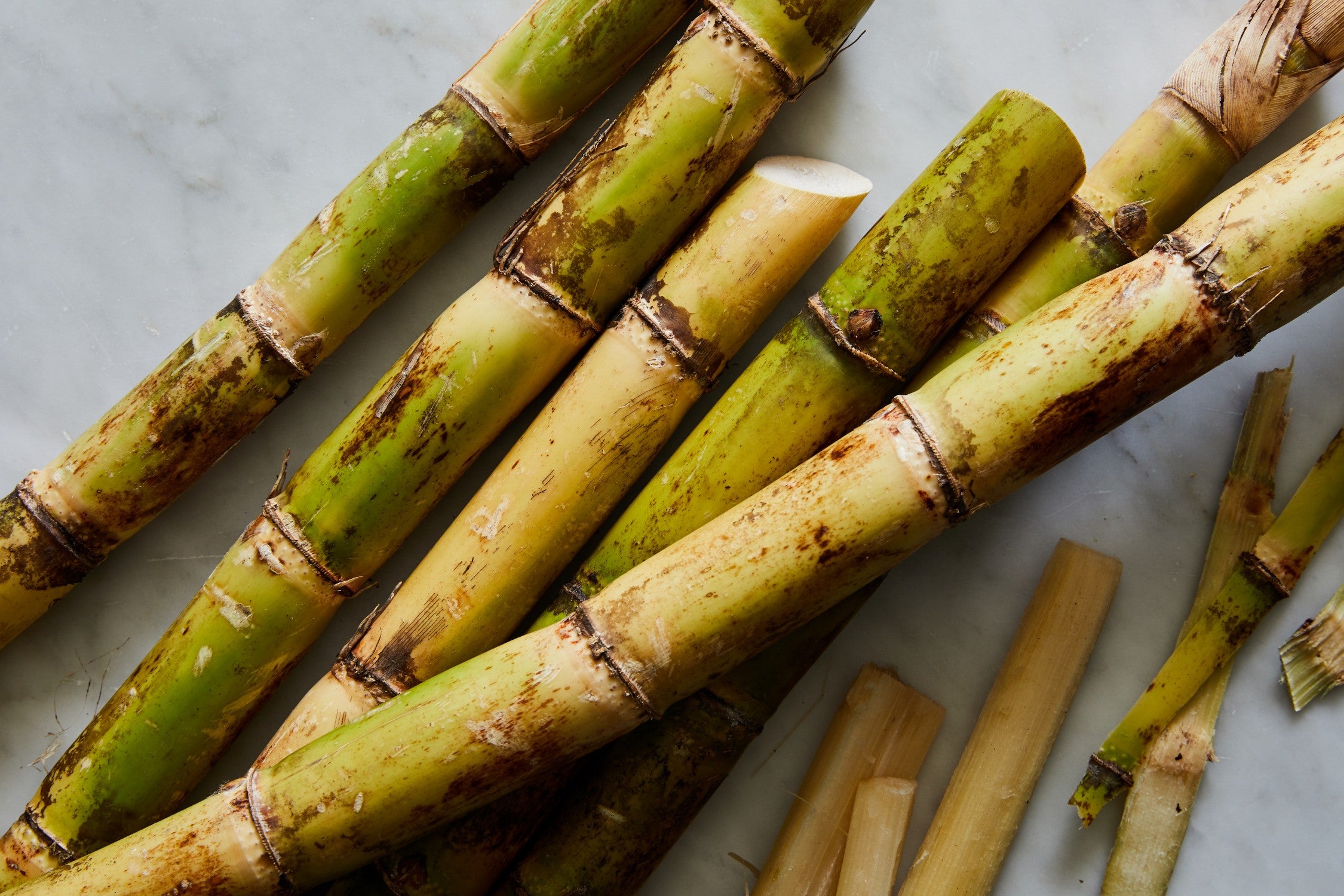An Extensive Overview to the Environmental Influence and Sustainability Practices in Walking Cane Sugar Handling
The ecological effect of walking stick sugar handling provides a complicated variety of obstacles that warrant mindful assessment. From dirt destruction and excessive water use to the carbon impact linked with farming and manufacturing, the repercussions of standard methods are far-ranging. What details techniques can be applied to strike an equilibrium between productivity and environmental stewardship?
Overview of Cane Sugar Processing
Walking stick sugar handling involves a series of organized steps that transform sugarcane into polished sugar. Originally, gathered sugarcane is delivered to refining centers, where it goes through cleansing to get rid of dirt and particles. Following this, the walking cane is crushed to remove juice, which is after that clarified by eliminating impurities via heating and the addition of lime.
The made clear juice goes through dissipation, where water is eliminated to concentrate the sugar material. This focused syrup is then taken shape with air conditioning, enabling sugar crystals to form. These crystals are divided from the remaining syrup using centrifugation, causing raw sugar. To accomplish polished sugar, the raw product undertakes further filtration processes, which may include cleaning and filtering to get rid of remaining pollutants and shade.
The final product is then dried out and packaged for circulation. Throughout this entire process, keeping efficiency and quality assurance is important to guarantee the sugar satisfies sector standards. Each action in walking stick sugar handling not only adds to the final item but likewise has effects for source usage and waste generation, setting the stage for discussions on sustainability and environmental impacts connected with sugar manufacturing.
Ecological Obstacles of Manufacturing
The manufacturing of walking cane sugar presents several substantial ecological obstacles that warrant focus. One key concern is the substantial usage of agrochemicals, consisting of chemicals and plant foods, which can bring about dirt destruction, biodiversity loss, and contamination of neighborhood water resources. The drainage from sugarcane areas often brings these chemicals right into close-by ecological communities, interfering with marine life and influencing the wellness of areas reliant on these water bodies.
One more difficulty is the high power usage connected with sugarcane processing. The boiling and refining phases call for considerable heat, primarily produced by shedding nonrenewable fuel sources, adding to greenhouse gas exhausts. Furthermore, the expansive land location needed for sugarcane growing can lead to deforestation and habitat devastation, additional intensifying environment adjustment and threatening wild animals.
In addition, the labor techniques in some regions raise moral worries, as workers might deal with poor working problems and insufficient wages. This scenario usually continues a cycle of poverty in neighborhood neighborhoods. Cane Sugar Processing. Addressing these ecological challenges is essential for creating much more lasting methods in cane sugar manufacturing, ultimately profiting both the environment and the neighborhoods associated with this industry
Water and Land Use Effect
Water resources and land application are critical parts in the walking stick sugar sector that substantially affect the setting. The cultivation of sugarcane calls for substantial water input, with price quotes suggesting that it can eat approximately 2,000 litres of water per kilo of sugar generated. This extensive use water frequently brings about depletion of neighborhood water resources, influencing not only the sugarcane ranches but additionally bordering environments and communities that depend on the exact same water resources for farming and residential usage.

Additionally, land usage for sugarcane farming can lead to deforestation and the conversion of all-natural environments right into monoculture plantations. This practice diminishes biodiversity, disrupts local communities, and contributes to soil degradation. The development of sugarcane areas often encroaches on valuable agricultural land, creating competitors for sources in between food and biofuel production.
Sustainable techniques, such as maximizing watering strategies and carrying out plant rotation, read what he said are necessary to mitigate these impacts. By adopting extra reliable water use and land administration strategies, the walking cane sugar sector can lower its eco-friendly impact, ensuring an equilibrium in between farming performance and ecological preservation.
Greenhouse Gas Emissions
Greenhouse gas exhausts stand for a substantial ecological problem within the walking cane sugar processing industry, especially as agricultural techniques increase to satisfy global need. The cultivation of sugarcane, a plant that grows in tropical environments, counts heavily on synthetic plant foods and pesticides, which add to nitrous oxide exhausts. Furthermore, land-use adjustments, including logging for new sugarcane vineyards, release co2 stored in plants and soil.
During processing, energy consumption is one more major source of greenhouse gas discharges - Cane Sugar Processing. Lots of sugar mills use nonrenewable fuel sources to power equipment and create warmth, causing substantial carbon impacts. Additionally, the transportation of raw sugarcane and finished products adds layers of emissions through fuel burning in lorries
The cumulative effect of these emissions exacerbates climate adjustment, posturing threats not just to the setting yet likewise to the long-lasting stability of the sector. Stakeholders need to acknowledge the urgent demand for thorough methods that attend to these discharges. This involves reviewing existing agricultural practices, refining techniques, and transportation systems to recognize locations for improvement and mitigation. Addressing greenhouse gas exhausts is crucial for cultivating a much more lasting walking stick sugar market in a changing environment.

Lasting Practices and Innovations
Lasting methods and developments are significantly vital in the cane sugar processing market as stakeholders seek to reduce environmental effects while preserving productivity. Learn More One substantial development is the execution of integrated plant management, which enhances source use by integrating dirt monitoring, pest control, and plant turning strategies. This method improves return while minimizing chemical inputs and preserving soil health and wellness.
Moreover, the adoption of renewable resource sources, such as biomass from sugarcane residues, has gotten grip - Cane Sugar Processing. By transforming waste items right into power, refining centers can reduce their reliance on fossil fuels, thus reducing greenhouse gas discharges
Water administration methods have actually likewise seen renovations via the recycling and reusing of water in handling plants, significantly reducing freshwater consumption. Innovations in technology, such as precision farming, make it possible for farmers to check plant wellness and source usage much more efficiently, making sure sustainable growing practices.
Furthermore, qualification programs like Fair Profession and Rain forest Alliance encourage eco accountable farming methods and promote social equity within the supply chain. By welcoming these lasting methods and developments, the cane sugar handling market can improve its resilience and add favorably to ecological stewardship.
Conclusion
The ecological effect of cane sugar handling provides significant obstacles, including dirt deterioration, high water consumption, and greenhouse gas exhausts, along with honest concerns associated with labor practices. Resolving these problems via sustainable techniques, such as integrated plant administration, renewable resource fostering, and water recycling, is essential. By advertising environmentally liable and socially equitable approaches in sugar manufacturing, the industry can mitigate its damaging effects, making certain a more lasting future for both environments and areas entailed in this industry.
Walking stick sugar handling entails a series of methodical actions that change sugarcane into refined sugar. Each step in walking stick sugar handling not just contributes to the final product yet additionally has implications for resource use and waste generation, establishing the phase for conversations on sustainability and environmental impacts connected with sugar manufacturing.
Greenhouse gas exhausts stand for a significant environmental worry within the walking cane sugar handling market, specifically as farming practices expand to meet global demand.Sustainable practices and advancements are significantly essential in the walking cane sugar handling industry as stakeholders look for to lower ecological influences while preserving performance.The ecological effect of walking stick sugar processing presents significant challenges, why not try these out including soil degradation, high water intake, and greenhouse gas emissions, along with moral worries connected to labor methods.
Comments on “Advanced Cane Sugar Processing: Enhancing Performance and Sustainability”